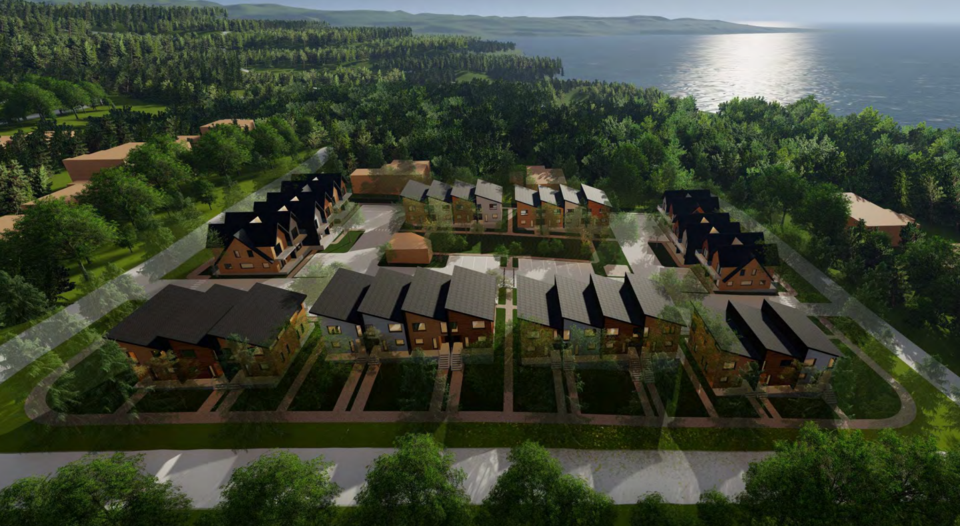With second reading of the project’s rezoning bylaw approved at the Oct. 20 Sechelt council meeting, the community will have a chance to comment about that concept and the project at a public hearing. No date or details for the hearing have been set.
Making purchase of these homes “attainable” or within the financial reach of middle-income earners was discussed at the meeting.
Westcor spokesperson Bruce Mason said the project, which has an estimated build-out price tag in the $20-million range, can do this through participation in BC Housing’s Affordable Home Ownership Program (AHOP). Achieving that requires agreements among and contributions from AHOP, Sechelt and the developer.
For a qualified home buyer, that deal could mean paying five to 20 per cent less than market price for their unit, lowering their down payment requirements and monthly mortgage costs. This would be done through an AHOP interest-free second mortgage on the property for that value. Repayment on that mortgage is not required for 25 years unless the unit is resold.
Council asked staff to continue discussions with the developer and BC Housing on the AHOP issue. Sechelt’s participation requires additional council approvals. Decisions are needed on how much land, community amenity contributions (CAC), density, fee or development approval concessions the municipality is willing to ante up to make this initial foray into the program. These are slated to come up for discussion post-public hearing but before final development approval.
Mason told Coast Reporter that taking that step would make Sechelt’s affordable housing fund and efforts “much more powerful.” With an AHOP, BC Housing would send repaid second mortgage funds to Sechelt, on the condition that they be used for housing needs the municipality identifies. In his estimation, that would bring more than $2 million back to the community, over time.
He contrasted that to the $57,500 CAC that Sechelt has assessed for the project without an AHOP agreement. That amount is based on the proposed increase to 34 housing units from the approved zoning of 11 homes on the one-hectare site.
At the meeting council approved that CAC level, to be paid by Westcor before final rezoning approval. It would be split between Sechelt’s affordable housing and community amenity funds. Sechelt planner Sven Koberwitz confirmed via email that “the CAC can be waived at council’s direction should the contribution be required to enable participation in the AHOP.”
Speaking with Coast Reporter, Westcor director Steve Dunton described municipal participation as “part of the glue” that holds the three-party AHOP agreements together. He explained that in an AHOP project, BC Housing provides financing at low interest rates which save the developer between four and five per cent on unit construction costs. The developer identifies savings that it can realize in building the project to bring the cost-reduction level to 10 per cent, and additional savings are brought in via municipal contributions.
Dunton noted that he has also reached out to a local funding agency regarding its potential participation in this project. While unable to talk specifics, he said the group was “extremely excited” about a potential role in future projects aimed at meeting the Coast’s core housing needs.
Dunton described such participation in AHOP projects as “modern day barn raising.” While not contributing physical labour to the construction, by supporting the fund and increasing the interest-free mortgage portion of the costs, community members could be part of building housing “in a different but still very real way.”
He said the design of the development with a larger number of smaller footprint homes will also deliver new homes to the market at more affordable prices than single-family structures.
Nine of the townhomes in the proposal are planned to include a secondary suite option. Mason says the idea is to build these as “lock-off” units, where the owner could rent out the suite for revenue or opt to keep it as part of a larger primary residence to meet their own needs.
When asked about the impacts the Mills Road project could have on the Coast’s affordable housing situation, Koberwitz wrote, “providing more ownership opportunities to middle-income households is one small part of addressing the housing crisis. The district is also working with developers and community groups on other aspects of the housing crisis through the construction of dedicated rental units and secured below-market housing.”



